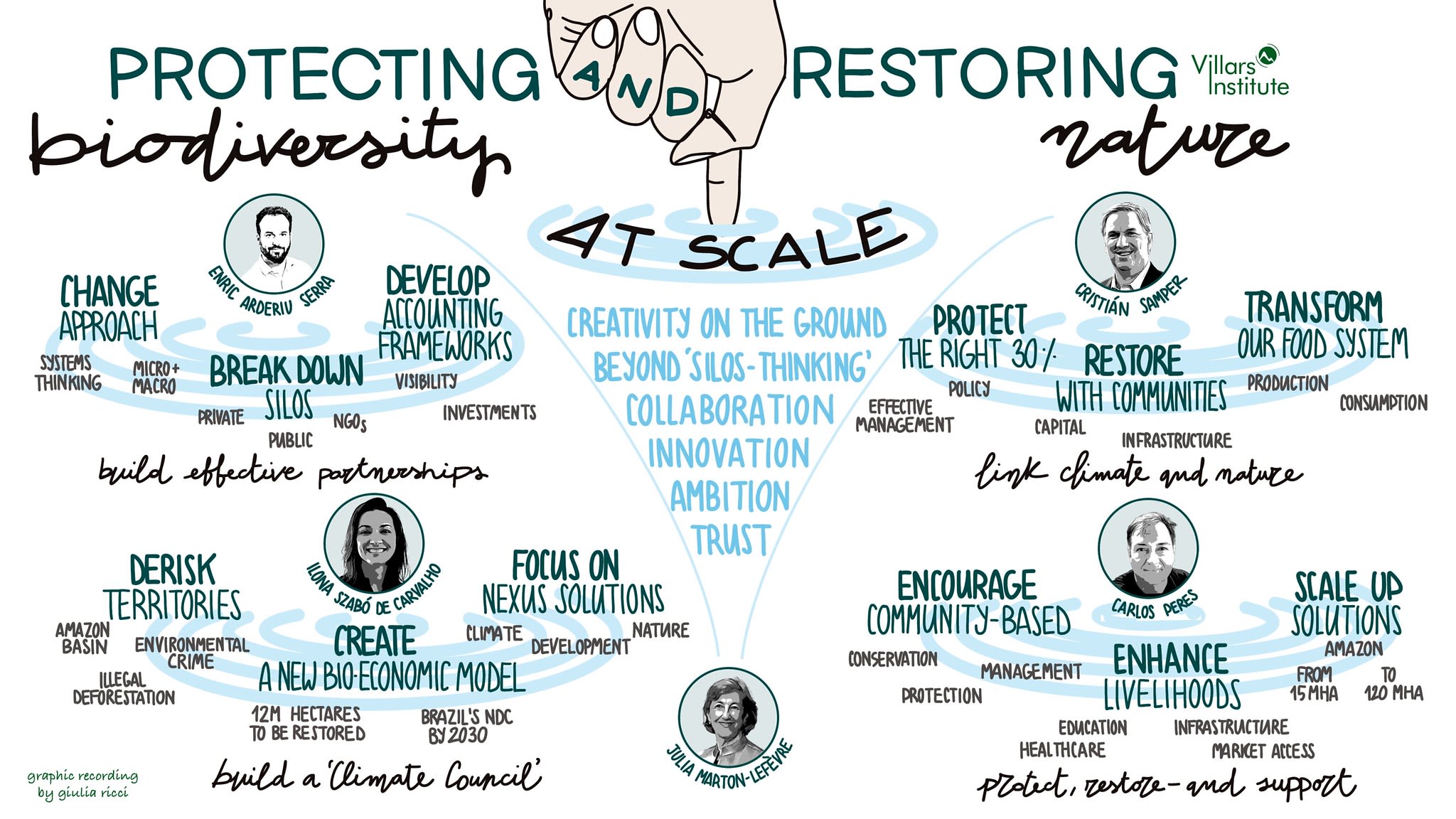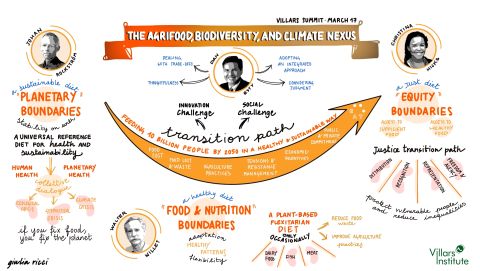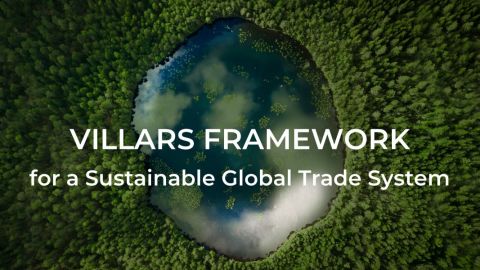Ideas from the Speakers
With many critical ecosystems still left unprotected, the current global efforts to protect land and marine areas are falling short. What can society do to prevent the pernicious consequences of climate change through conservation and restoration, and what sectors must be at the forefront of these efforts?
Despite the current increasing momentum towards the goal of protecting 30% of land and ocean areas, the focus must be on selecting “the right 30%.” Conservation efforts are missing around 40% of the most critical ecosystems, demonstrating that current strategies and efforts are insufficient. It would require at least double the land under protection globally to meet the goal, alongside prioritizing key biodiversity hotspots.
The speakers emphasized the importance of community involvement in restoration and conservation efforts. Most of the Amazon’s protected areas, for instance, are legally occupied by local communities, making it essential to integrate them into conservation strategies. Communities often help protect areas that are up to 85% larger than officially designated protected zones. They do this with little to no government assistance, resulting in wealthier, healthier, and happier communities, with electrification, market access, healthcare, and education. Community-based conservation models have huge socioeconomic dividends, highlighting the importance of empowering local individuals. Long-term protection (about eight years) can fully restore ecosystems, as seen in areas like the Juruá region of Brazil, where local communities sustainably harvest giant Amazon River turtles, piranha, and arapaima while protecting upland forests.
Beyond conservation and restoration, experts in supply chain and products suggested that a transformative shift in global food, energy, and transport systems is necessary. About 20% of the world's land is dedicated to livestock production, and the carbon footprint is staggering: producing just 1 kilogram of beef generates over 99 kilograms of CO2 equivalent. Therefore, food systems are particularly central to the challenge of CO2 emissions.
The discussion additionally shed light on the significance of partnerships between the public and private sectors to expand these efforts. The private sector for these initiatives is growing; investments have been made in jurisdictional REDD+ initiatives and restoration programs across Latin America, including Argentina and Peru, with some funds raising over $1.5 million. However, the biggest challenge for private-sector engagement is the lack of visibility and clarity in accounting frameworks, which prevents mobilizing capital on a large scale. Developing nature-inclusive frameworks and fostering trust among stakeholders can break these cycles and facilitate effective collaboration.
Insights from the Audience
Participants in the discussion posed critical questions about the urgent need for action to protect and restore the Amazon, focusing on governance, finance, and partnerships. With the Amazon shifting from a net carbon sink to a net emitter, they asked how the 2025 UN Climate Change Conference (COP 30) in Belém can drive real change rather than just more discussion. Expert panelists emphasized that strong climate governance is key, highlighting jurisdictional programs and public-private partnerships as effective strategies. The Brazilian state of Tocantins is a model, but mobilizing finance—not just talk—is essential to increase conservation efforts.
Another pressing question was how we can ensure that conservation efforts are backed by solid data. Panelists highlighted the importance of managing natural regeneration effectively, given that nearly 50% of the Amazon is protected while large areas remain undesignated. They mentioned the development of a global terrestrial ecosystem map with 3-meter resolution, a tool that will monitor changes in real time and provide policymakers with the data needed to drive action.
Participants also asked what role different communities can play in protecting and restoring the Amazon. Experts emphasized the need to break down silos and foster trust, ensuring that local voices are included in decision-making. They stressed that innovation, urgency, and strategic partnerships are essential for expanding solutions. How do we turn these discussions into action? Panelists urged a shift from fragmented efforts to coordinated initiatives that mobilize both financial and political will. They concluded that as COP 30 approaches, ensuring that financial and policy commitments align with the urgency of the Amazon’s challenges is more critical than ever.









